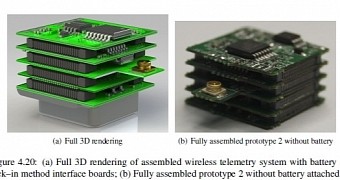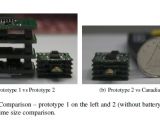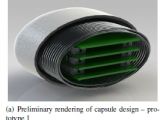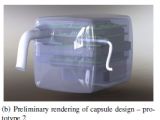It's true that most injuries and diseases are diagnosed by means of scans, like MRI or ultrasound, but more thorough examinations and research often need more invasive tests. Researchers from the University of Western Ontario have devised something a lot less awkward than anything available right now.
Additive manufacturing is once again showing its worth, as Kyle G. Fricke, under the direction of Dr. Robert Sobot, has created wireless, implantable systems that can investigate the state of the heart while under remote control.
The devices are small, wireless items with integrated blood pressure sensors, fully implantable cardiovascular pressure monitors (including a stent), and a size of just 2.475 cm3 and weight of a bit over 4 grams.
“Wireless Telemetry System for Implantable Sensors” is the official paper written on this subject. As you can infer from the title, the system wirelessly relays biometric data.
The method relies on 3D printed telemetric sensors
It's not easy to create tiny sensors capable of working safely inside someone's body. Many a lab rat saw their lives expiring or seriously complicated due to tests in this field.
However, research continues because the type of biomedical data that can be collected inside a living body is a lot more valuable than what external scans can relay. Especially when you're studying the long-term effects and implications of a condition.
Safety is another concern. Getting MRIs, X-Rays and whatever other scans isn't healthy if done in frequent succession. X-Rays, for example, should not be done closer together than six months, preferably not at all.
Real-time left ventricular pressure-volume loops are the main tools used to analyze the health of the myocardium in animals and humans. The new telemetric sensors are made just for that.
They are tiny, biocompatible capsules with four catheters so small that they can be placed inside the left ventricle of even the smallest lab mice without issue.
How the new method differs from the normal approach
Usually, the sensor generates an electric field used to continuously measure the activity, and the catheters are attached to an external base station. The new 3D printed telemetric sensors can relay info wirelessly though, making everything safer and easier for the medic as well as the patient (no more restrictions to movement).
3D printing technology using biocompatible materials like polycarbonate-ISO and various metals can be used to produce the sensors, Fricke says. The only part that can't be printed is the battery, which has to be attached to the underside.

 14 DAY TRIAL //
14 DAY TRIAL // 


